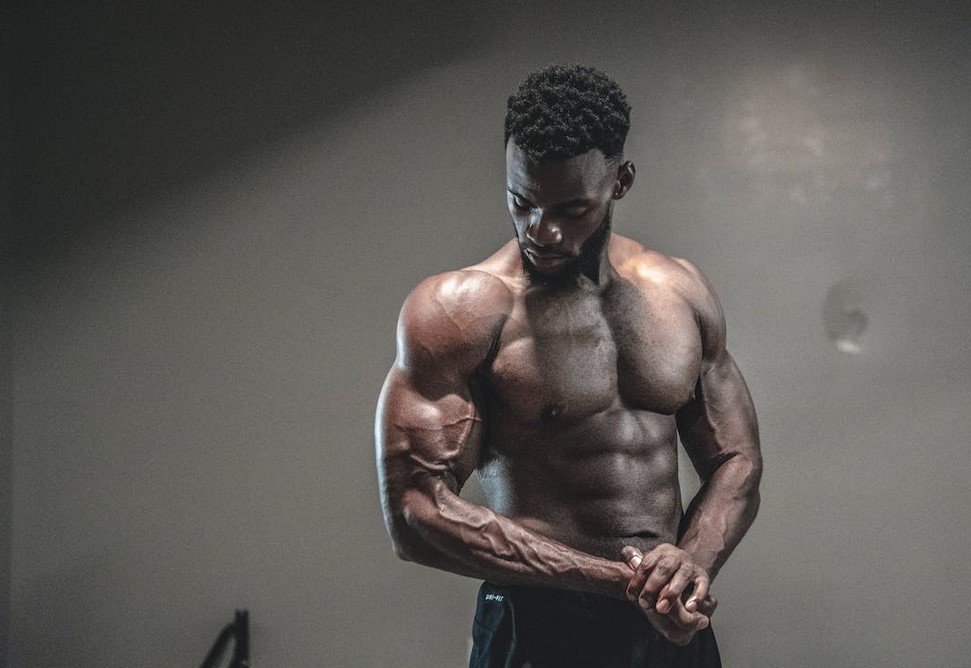
High-Intensity Interval Training (HIIT) is a popular and effective workout method that alternates short bursts of intense exercise with periods of rest or lower-intensity activity. It’s known for its efficiency and ability to provide maximum results in a shorter amount of time compared to traditional steady-state workouts.
Here’s how HIIT typically works:
1. Short, Intense Bursts: During a HIIT workout, you perform short intervals of high-intensity exercises. These exercises can include sprints, jumping jacks, burpees, mountain climbers, or any other intense bodyweight movements.
2. Recovery Periods: After each intense interval, there’s a brief recovery period of lower-intensity exercise or rest. This allows your heart rate to come down slightly before the next high-intensity interval.
3. Repeat: The cycle of high-intensity intervals and recovery periods is repeated for the duration of the workout. The number of intervals and the length of each interval can vary depending on your fitness level and the specific workout routine.
Benefits of HIIT:
1. Efficiency: HIIT workouts are time-efficient since you can get a highly effective workout in as little as 20-30 minutes.
2. Calorie Burn: HIIT can help burn more calories in a shorter time compared to steady-state exercises. It also leads to the afterburn effect, where your body continues to burn calories even after the workout is over.

3. Cardiovascular Health: HIIT can improve cardiovascular endurance and heart health.
4. Muscle Building: It can help build and tone muscles, especially when combined with resistance exercises.
5. No Equipment Necessary: Many HIIT workouts can be done with just bodyweight, making them accessible and easy to do at home or while traveling.
6. Metabolic Benefits: HIIT can improve insulin sensitivity and metabolic health.
Tips for HIIT Workouts:
1. Warm-Up: Always warm up before starting a HIIT session to prepare your body for the intense activity.
2. Proper Form: Focus on maintaining proper form during exercises to prevent injuries.
3. Start Slowly: If you’re new to HIIT, start with shorter intervals and gradually increase the intensity and duration as your fitness level improves.
4. Listen to Your Body: HIIT is intense, so it’s essential to pay attention to your body and take breaks if needed.
5. Combine with Rest Days: Allow your body to recover by incorporating rest days between HIIT sessions.
6. Stay Hydrated: Drink water before, during, and after the workout to stay hydrated.
Remember, while HIIT can be highly effective, it may not be suitable for everyone. If you have any medical conditions or concerns, it’s best to consult with a healthcare professional before starting any new workout program.
Related Posts
20 workouts for arms and legsArms: 1. Bicep curls with dumbbells 2. Hammer curls with dumbbells 3. Tricep dips on a bench 4. Tricep pushdowns on a cable machine 5. Close-grip push-ups 6. Overhead tricep extensions with dumbbells 7. Pull-ups 8. Chin-ups 9. Band curls with resistance bands 10. Diamond push-ups 11. Preacher curls with dumbbells or barbell 12. Barbell curls 13. Zottman curls 14. One-arm cable curls 15. Concentration curls with dumbbells 16. Seated dumbbell curls 17. Cable kickbacks 18. Standing dumbbell tricep extensions 19. Skull crushers with dumbbells or barbell 20. Kettlebell swings Legs: 1. Bulgarian split squats 2. Barbell squats 3. Alternating lunges with dumbbells 4. Leg press machine 5. Box jumps 6. Wall sits 7. Deadlifts with dumbbells or barbell 8. Leg curls on a machine 9. Leg extensions on a machine 10. Calf raises on a machine or with dumbbells 11. Sumo squats with dumbbells or kettlebell 12. Front squats…
Outdoor Fitness: Embracing Nature for WorkoutsOutdoor fitness, which involves exercising in natural settings like parks, forests, beaches, and mountains, has gained popularity in recent years. Embracing nature for workouts offers numerous benefits that go beyond just physical health. Here are some advantages and ideas for incorporating outdoor fitness into your routine: 1. Physical Health Benefits: - Fresh Air and Sunlight: Exercising outdoors allows you to breathe in fresh air and soak up natural sunlight, which can boost your mood, improve vitamin D levels, and support immune function. - Natural Terrain: Outdoor environments often provide uneven and varied terrain, challenging different muscle groups and improving balance and stability. - Higher Intensity Workouts: Activities like hiking, trail running, and outdoor sports can provide more intense workouts compared to indoor exercises. 2. Mental Health Benefits: - Reduced Stress: Being in nature can have a calming effect on the mind, reducing stress and anxiety levels. - Enhanced Mood: Exercising…
The Benefits of Strength Training for Weight LossStrength training, also known as resistance training or weight training, offers numerous benefits for weight loss and overall health. While cardio exercises like running and cycling are commonly associated with weight loss, strength training can play a crucial role in helping you achieve your weight loss goals. Here are some of the key benefits of strength training for weight loss: 1. Increased Metabolic Rate: Strength training helps build lean muscle mass, which has a higher metabolic rate compared to fat tissue. As you gain more muscle, your resting metabolic rate increases, meaning you burn more calories even when at rest. This can lead to more effective and sustainable weight loss. 2. Fat Burning: While cardiovascular exercises primarily burn calories during the activity, strength training has a lasting impact on calorie burning. After a strength training session, your body continues to burn calories as it repairs and builds muscle. This phenomenon…
Bodyweight Workouts: No Equipment, No ProblemBodyweight workouts are an excellent way to stay fit and active without the need for any equipment. They can be done virtually anywhere and are suitable for all fitness levels. Here are some effective bodyweight exercises and workout routines to get you started: 1. Warm-Up: Before jumping into the main workout, warm up your body with some dynamic movements like arm circles, leg swings, high knees, butt kicks, and jumping jacks. This helps increase blood flow and flexibility, reducing the risk of injury. 2. Upper Body Exercises: a. Push-Ups: Works your chest, shoulders, and triceps. You can do regular push-ups or modify them on your knees if needed. b. Dips: Using a sturdy chair or parallel bars, target your triceps and shoulders by performing dips. c. Diamond Push-Ups: Place your hands close together in a diamond shape to intensify the focus on your triceps. d. Pike Push-Ups: Elevate your hips…
Stepping Up with Confidence: When and How to Wear High HeelsHigh heels have been a symbol of elegance and femininity for centuries, adding grace and allure to any outfit. While they may seem daunting to some, with the right approach, anyone can rock high heels confidently and comfortably. In this article, we'll explore when and how to wear high heels with confidence, so you can stride confidently and gracefully in any setting. When to Wear High Heels: 1. Formal Events: High heels are the perfect choice for formal occasions like weddings, galas, and cocktail parties. They elevate your look and complement elegant dresses or evening gowns. 2. Professional Settings: In a corporate or professional environment, wearing high heels can add a touch of sophistication to your outfit. Opt for closed-toe heels in neutral colors for a polished and professional appearance. 3. Nights Out: When hitting the town for a night out with friends or a special date, high heels can…
Elevate Your Style: A Guide to Selecting a High-Quality Designer HandbagA designer handbag is more than just a fashion accessory; it is an investment in quality, craftsmanship, and timeless style. With countless luxury brands and styles available, choosing the perfect high-quality designer handbag can be a daunting task. In this article, we'll guide you through essential factors to consider when selecting a premium designer handbag that will elevate your style and stand the test of time. 1. Research Luxury Brands: Start by researching reputable luxury brands known for their craftsmanship, materials, and iconic designs. Look for brands that have a long history of creating quality handbags. 2. Define Your Style and Needs: Consider your personal style and lifestyle. Do you prefer classic, minimalist designs, or are you drawn to bold and statement-making pieces? Think about how you plan to use the handbag—whether it's for everyday use, special occasions, or travel. 3. Choose High-Quality Materials: Premium designer handbags are crafted from…



